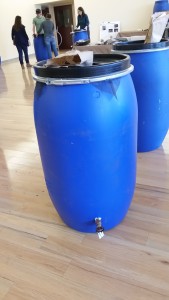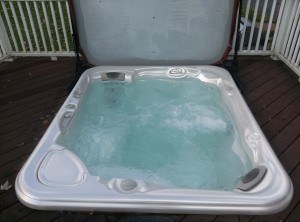Many years ago [a couple of olympiads ago actually] the HomeOwnerFamily visited the FriendInRaleighFamily for a weekend. FriendInRaleighMan is always a few steps cooler than HomeOwnerMan and just a few years ahead on technologies. For example, he was the first person HomeOwnerMan knew who had given up cable TV for streaming content. He described to his wide-eyed superhero friend how he had used an old computer and the internet to watch streamed content like NetFlix. While everyone else was going to their mailbox to retrieve damaged DVDs that would refuse to play just at the climax of the movie, FriendInRaleighMan didn’t even have to go to his mailbox! It was the coolest thing WifeGirl and HomeOwnerMan had ever seen, but it was still a year or two too cool for them. But they all sat down and watched the olympics on broadcast TV.
Later in the visit, though, there was discussion of a futuristic gizmo that HomeOwnerMan thought might be in reach for him. The invention was so far out there that HomeOwnerMan was sure that it was brought to earth by some advanced time-traveling civilization. The invention was called a “rain barrel” and it ingeniously captured rain runoff from the roofs of houses. This water could later be used to irrigate plants, wash cars, or even to flush toilets in the event of a water emergency. HomeOwnerMan was struck with awe and had to investigate further.
It was all HomeOwnerMan could talk about that year. He looked up plans for how to build and deploy them. He priced out the materials needed to make them. He spoke to everyone who would listen about the virtues of them. (At the time, he wasn’t sure what the virtues were, but he knew it must be virtuous.) One neighbor, we’ll call her PolesReversedLady, was listening to HomeOwnerMan and declared, “You know those things are illegal. You aren’t allowed to take the rain water. It belongs to the township, not to you. And besides, it is really bad for the environment. It will kill all the fish and dry up the aquifer…” She went on and on. Even though PolesReversedLady was wrong on every account and HomeOwnerMan was pretty sure it was all bunk, it was enough to stem his enthusiasm for almost 8 years.
HomeOwnerMan continued to research rain barrels but never with quite the zeal that he once had.But then just a few weeks ago when WifeGirl was reading SocialMediaBook and found a site that was offering a seminar on “how to make your own rain barrel”. She passed the link along to HomeOwnerMan for the New Jersey Water Supply Authority (NJWSA, http://www.raritanbasin.org/rain_barrel.html) and happy days were here again for HomeOwnerMan. To begin with, it was vindication for him. The rain barrel program was listed under the watershed protection program. They keep runoff from carrying pollution to the streams, allowing the water to filter naturally through the soil before returning to the water supply. They help prevent stream erosion by lowering the volume of water entering the stream during storm events. The water can be used rather than pure drinking water for watering plants and washing cars. They use no energy, and are so beneficial that many municipalities offer a credit for installing them.
Secondly, the program is very inexpensive. For just $35 you are given all of the materials to build one, and you could build more than one if you wanted. There is some installation expenses, but they are minimal and might be done with materials HomeOwnerMan has around the house.
C: the three women who run the program (Sarah, Alex, and Kathy) were superhero nice. HomeOwnerMan was reminded of a flight attendant he once met on a particularly long flight where the passengers had become angry and restless. The flight attendant offered a perky “Turkey Sandwich!?” to 310 passengers with poise and grace and never lost her smile. The NJWSA women were just as perky and nice.
and IV: It took less than a half an hour to put the rain barrel together, and I’m guessing about a half and hour to install it as well.
So what are you waiting for? Find out when the next seminar is in your area. Build and install your own. Save the planet. Be a HomeOwnerMan (or HomeOwnerWoman) yourself. You may not have the tights and the caricature (courtesy www.EmilyArts.com), but you will be a reasonable facsimile. (FriendInRaleighMan had a facsimile machine, or Fax machine, before HomeOwnerMan, too. He was just way cool!)




